- youtube
- bluesky
- Home
- About
- Costume Journal
- Membership
- Conference & Events
- Grants & Awards
- News & Social
In this week’s blog post Costume Society Ambassador Martha Strachan reviews The Fashion and Textile Museum’s current exhibition ‘150 Years of The Royal School of Needlework: Crown to Catwalk’.
It is refreshing to see the practice of embroidery, an artform that is all too often diminished as a craft and, for some, even forgotten about, take centre stage at The Fashion and Textile Museum’s new exhibition ‘150 Years of The Royal School of Needlework: Crown To Catwalk’. Running from the 1st of April to the 4th of September, the exhibition showcases how versatile, historically significant, and indeed surprising The Royal School of Needlework’s (RSN) hand embroidery can be. With 120 embroidered pieces dating from the conception of the school in 1872 to the present day, the exhibition is a true reflection of the school’s fascinating history and current work. Including elaborate royal ceremonial ware, charming lingerie, ceremonial military embroidery, divine eccentrical garments, and of course student’s work, this exhibition is an embroidery-lover’s heaven.
In 1872, originally situated above a bonnet shop and founded by Princess Helena, Lady Victoria Welby and Lady Marian Alford, The Royal School of needlework was set up upon two principals. Firstly, to preserve and protect the artform of embroidery in a time when many of the techniques were being forgotten in favour of the quick Berlin woolwork method, a result of the industrial revolution; and secondly, to support women who were on the brink of destitution, through training and employment. All of which restored the artform, caused a surge in demand for needlework and, as one of the first female lead institutions, offered women greater independence.
The school, as much as it was (and continues to be) a place of education, artisanship, and community, was also an entrepreneurial business who looked to innovate. From the School’s conception it exhibited at international exhibitions, published books, and sold personalised embroidered garments. In fact, in the first room of the exhibition, there is various samples, designs and ephemera from the school’s early history showing how the school responded to its client’s every design need. Associated with the arts and crafts movement this room shows painted motifs by Walter Crane and William Morris.
The exhibition is arranged chronologically and thematically; we are taken through the RSN’s historical highlights, looking at royal, military, religious and commercial ware. A particularly exciting highlight is the 1937 Robe of Estate of Queen Elizabeth, The Queen Mother, not seen on display since the 1990s. With its meters upon meters of exquisite embroidery, the exhibition certainly delivers on the Royal grandeur one might expect from the RSN. We also see Edward VII’s Coronation Cope and a sample of the current Queen’s robe of estate (currently on display at Windsor), which offers a detailed insight into the vast amount of the goldwork technique used for such significant and time-consuming pieces. With the School’s royal lineage and patronage granted in 1875, it is of no surprise it is a royal favourite.
The exhibition offers some surprising insight into the RSN’s history. This includes a display on military wear, of course show casing ‘both sides alike’ military colours, but also stitch kits for soldiers in World War One,promoting embroidery as a method of therapy. Considering the pandemic’s lockdowns when many picked up the sewing needle again, this is a touching insight into how embroidery has improved mental health throughout history, and importantly that it is not a practice only enjoyed by women.
Another surprising feature, however in fact a mainstay of the RSN’s work room since 1916, is a section on delicate lingerie, showing the school’s savvy commercial focus. Practically successful in the 1930s, the RSN worked on garments for high society and royalty, perhaps the most celebrated garment was for Lady Alice Montagu-Douglas Scott for her marriage to the Duke of Gloucester in 1935. After the wedding her trousseau was put on display in London.
From modern designer collaborations to pieces made by recent graduates of the school, the second floor of the exhibition informs the visitors about the work The Royal School of Needlework continue to do to preserve and enhance embroidery in the industry today. For example, the Eco-Fashion campaign ‘Red Carpet Green Dress’, worn by Naomie Harris at the Oscar in 2013. The dress was designed by Michael Badger, realised by Vivienne Westwood’s studio and embroidered by 22 experts, racking up 680 hours of hand embroidery. The garment is made from organic chamomile dyed silk, recycled zippers, vintage glass beads and chocolate wrappers.
A second-floor favourite must be British artist Kirstie Macleod’s ‘Red Dress Project’. A monumental piece, the dress features over 300 embroideries from 46 different countries. You could truly marvel at the dress all day. The dress’ many embroiderers come from largely marginalised communities and live in poverty. It is an emotional and intimate way to tell the stories of many across the globe united through one dress, and an example of how the RSN continue to support women through needlework as they have since 1872.
Of course, the students work is at the core of The Royal School of Needlework. In this section of the exhibition there is an emphasis on the world-renowned skill of RSN students and their incredible imagination, a demonstration that needlework certainly isn’t an extinct art form and that the School has indeed achieved what it had originally set out to do since the Victorian era. Including an exquisitely embroidered blazer by Millie Whitehead, now a designer at Alexander McQueen; a futuristic metal work piece by Elena Thornton, Winner of the Hand and Lock Award for Textile Art 2017; and a streetwear-meets embroidery jacket by Dev Patel, now running his own brand NOCURFEW, to name but a few extraordinary pieces.
In a time when the public continue to learn and practice embroidery to seek rest bite and help with mindfulness throughout the COVID-19 pandemic, as demonstrated through a display on the NHS embroidered hearts project and ‘postcards from home project’, the exhibition is extremely relevant today as well as being a perfect reflection of the School’s rich 150 year history. Head of Exhibitions at the Fashion and Textile Museum Dennis Nothdruft says: ‘The Royal School of Needlework has been instrumental in preserving this nation’s traditional needlework skills; honouring the past whilst ensuring their place in the future, marrying contemporary design with peerless technique. The Fashion and Textile Museum is delighted to collaborate with the RSN to present 150 Years of the Royal School of Needlework: Crown to Catwalk, a fitting celebration of this important and cherished national institution’.
The Fashion and Textiles Museum’s current exhibition ‘150 Years of The Royal School of Needlework: Crown to Catwalk’ is on display from the 1st of April to the 4th of September 2022. To book tickets click here.
It might be useful to brush up on your embroidery terminology before you go, that includes Jacobin Crewel work, blackwork, whitework, gold work, silk shading and laidwork to name but a few of the techniques featured in the exhibition.
To read more Costume Society blog posts about The Royal School of needlework’s current project click here.
Image gallery
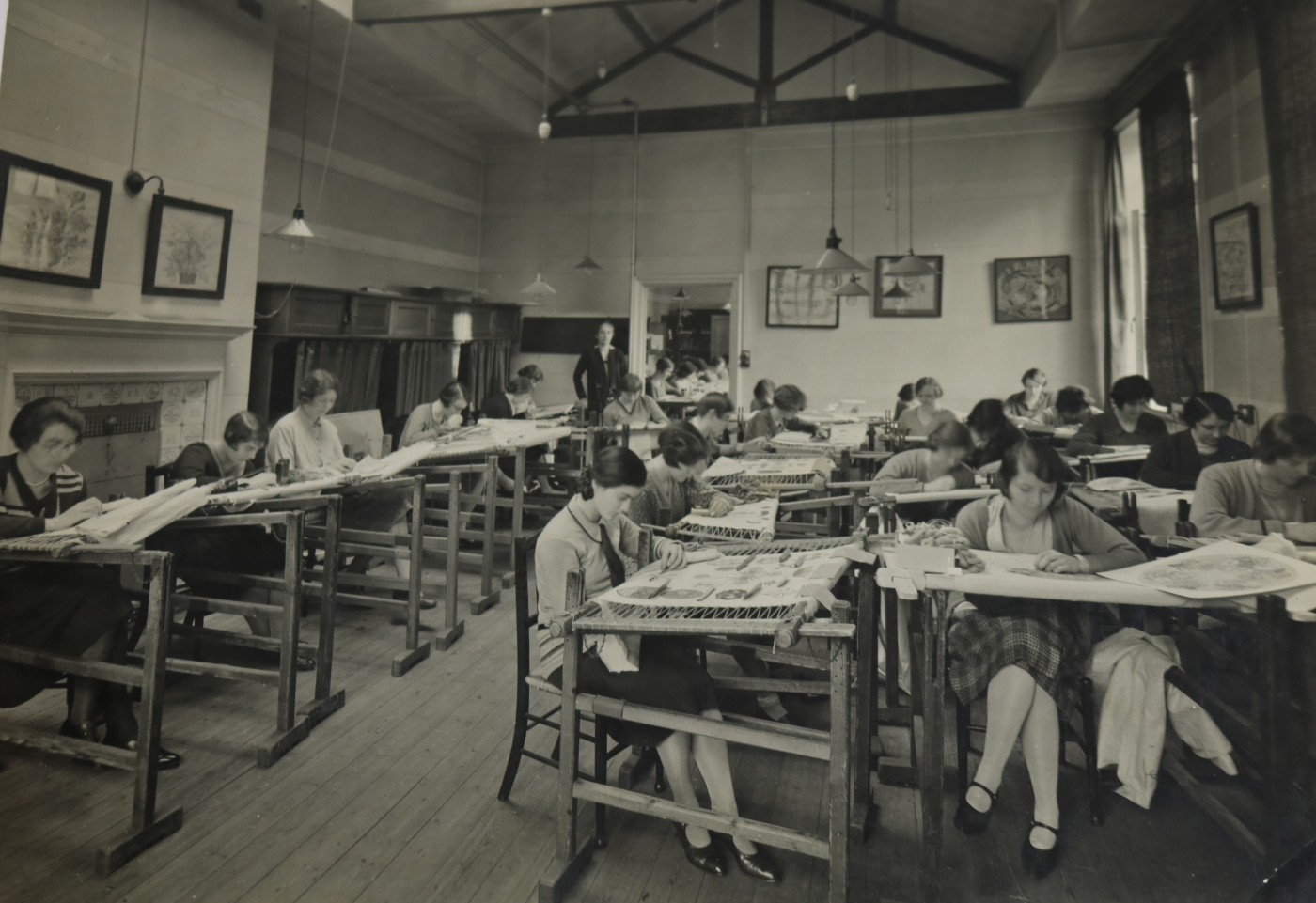
RSN Training School. Copyright Royal School of Needlework.

Silk Shaded Magnolias by RSN Head of Workroom Margaret Bartlett in 1940s. Copyright Royal School of Needlework.
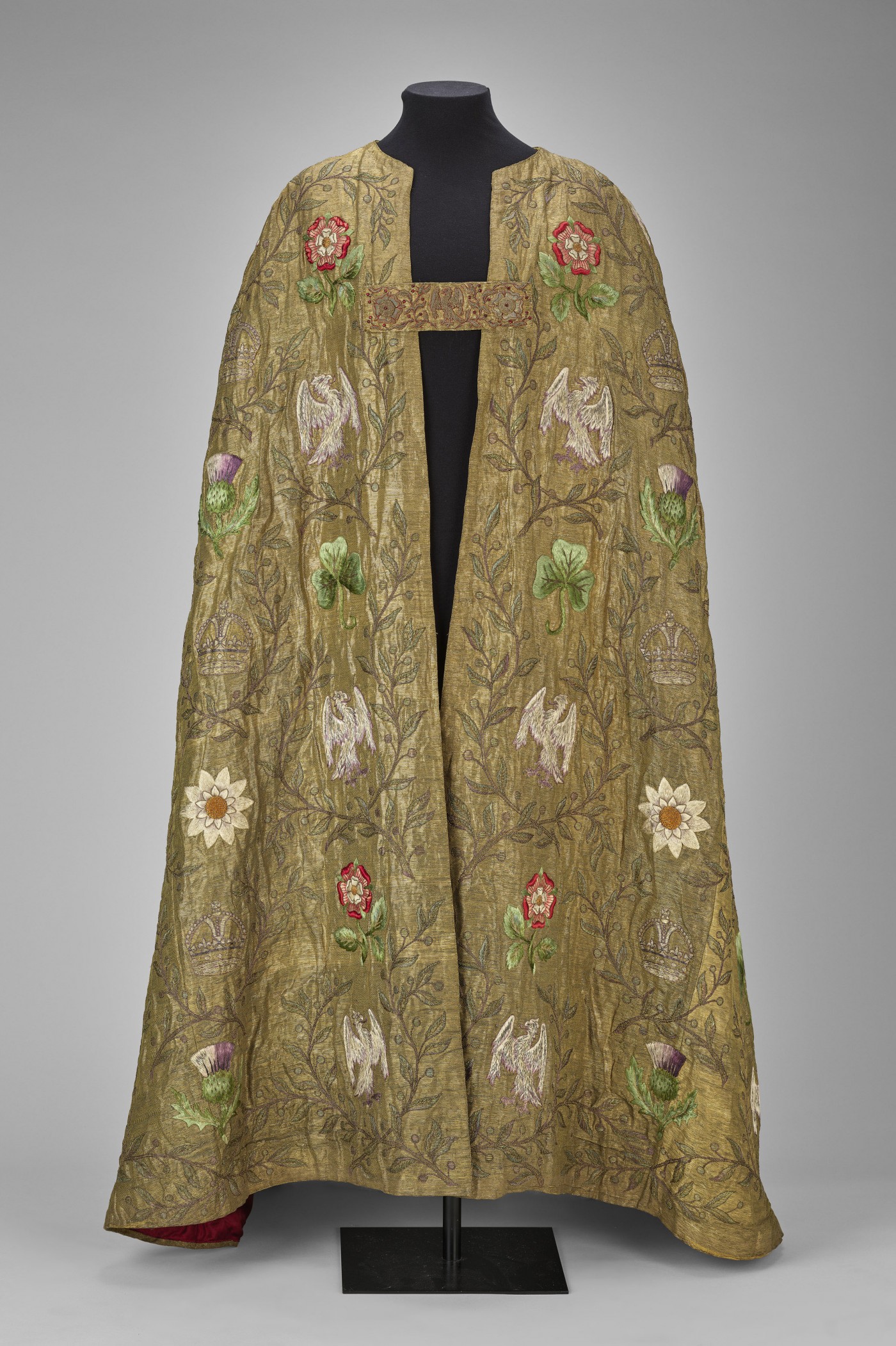
King Edward VII’s Coronation Mantle 1902. Royal Collection Trust. Copyright of Her Majesty Queen Elizabeth II. 2022.

Wartime Therapy Stitching. Copyright Royal School of Needlework.
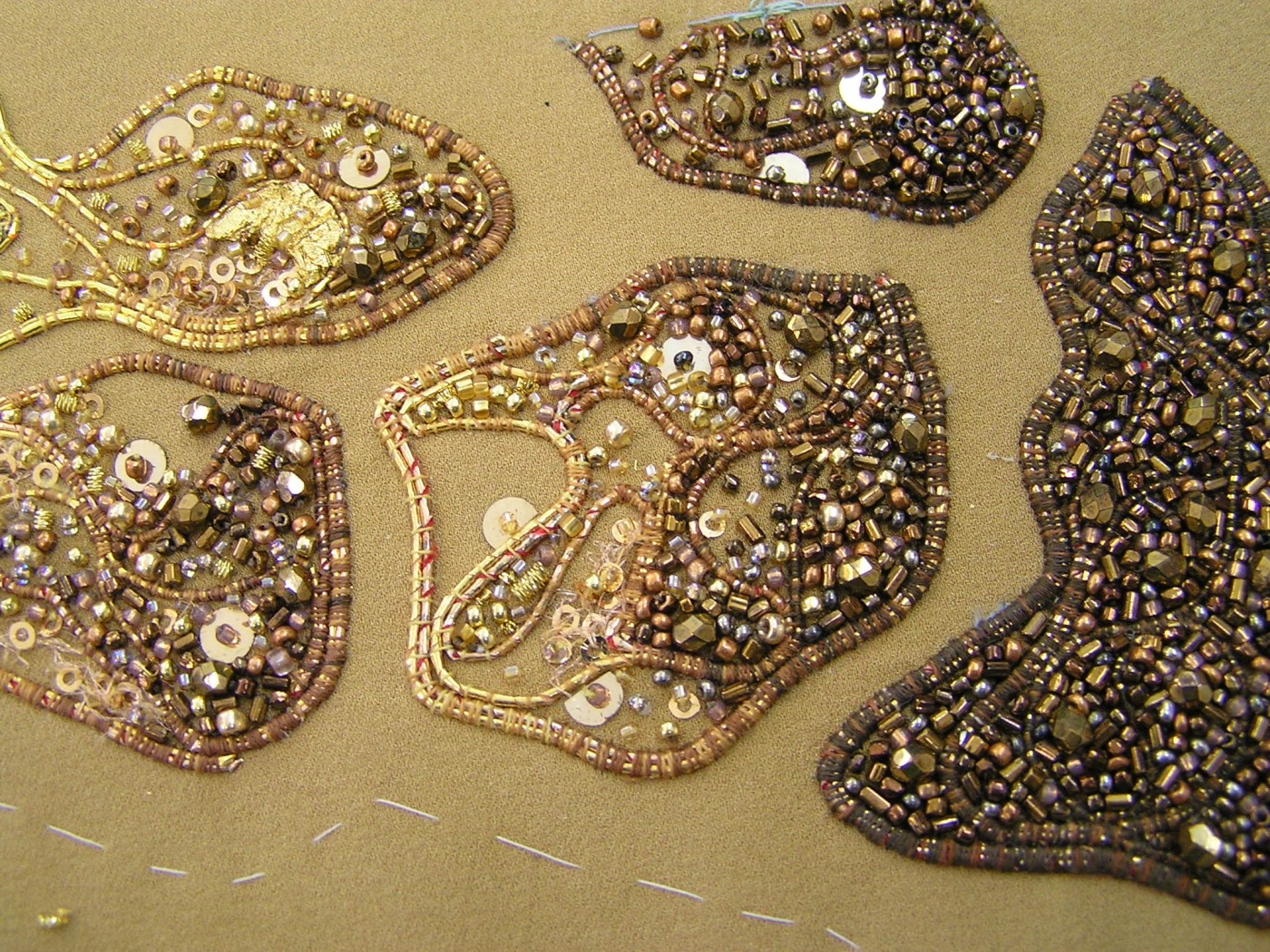
Red Carpet Green Dress 2013 Embroidery Close Up. Copyright Royal School of Needlework.
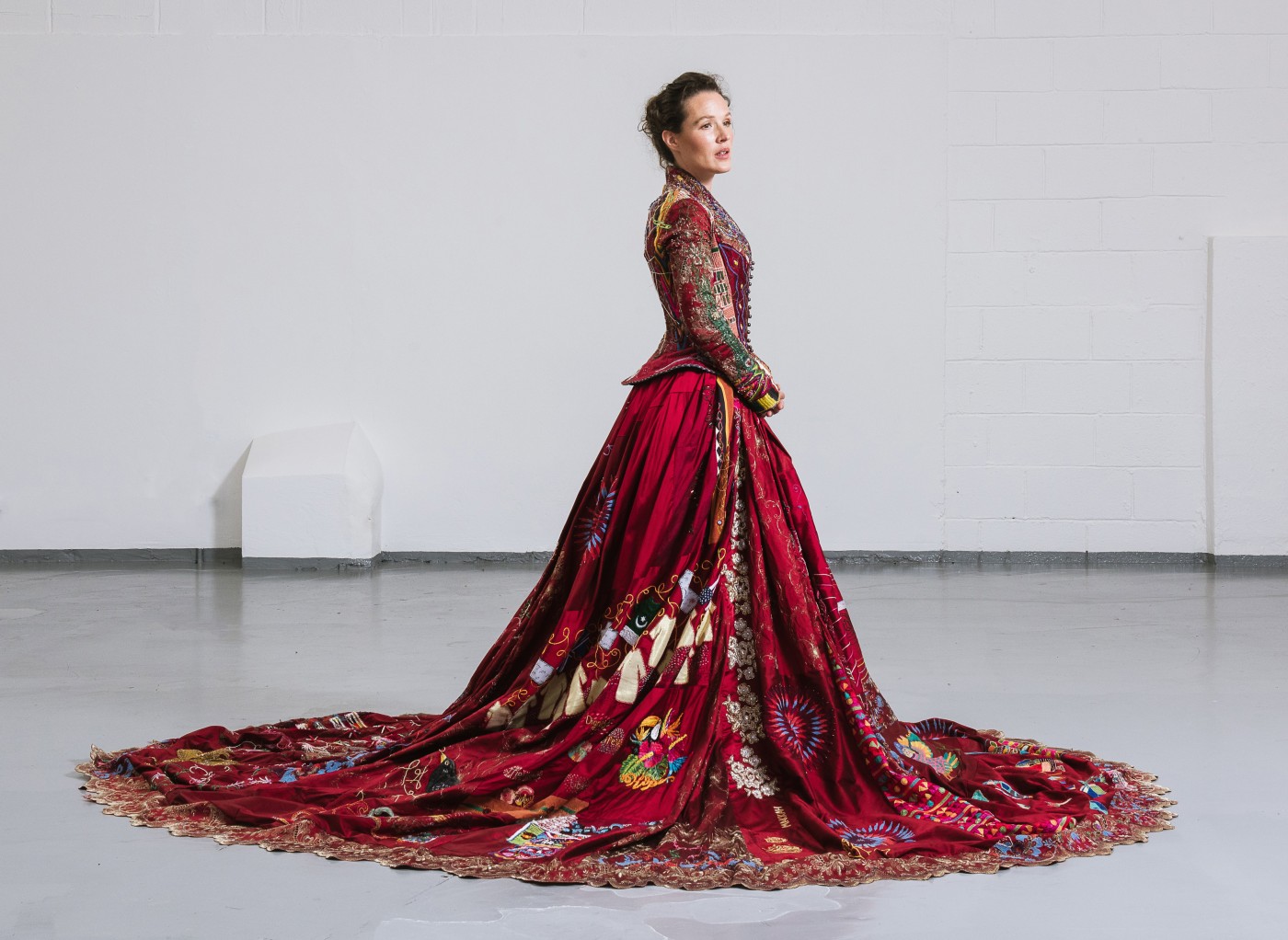
The Red Dress. Copyright The Red Dress Project.
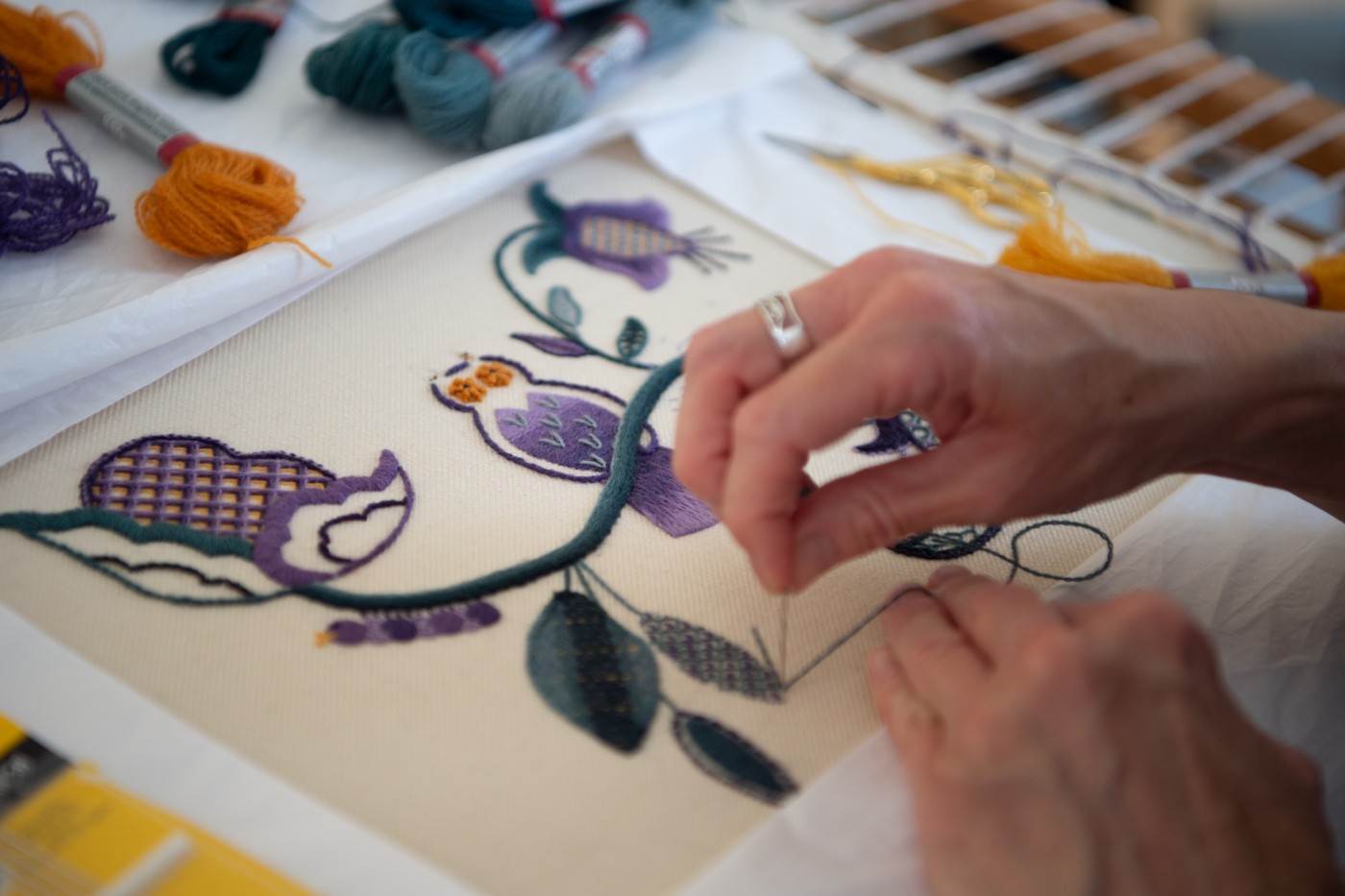
Jacobean Crewelwork by a RSN Certificate & Diploma Student. Copyright Royal School of Needlework.
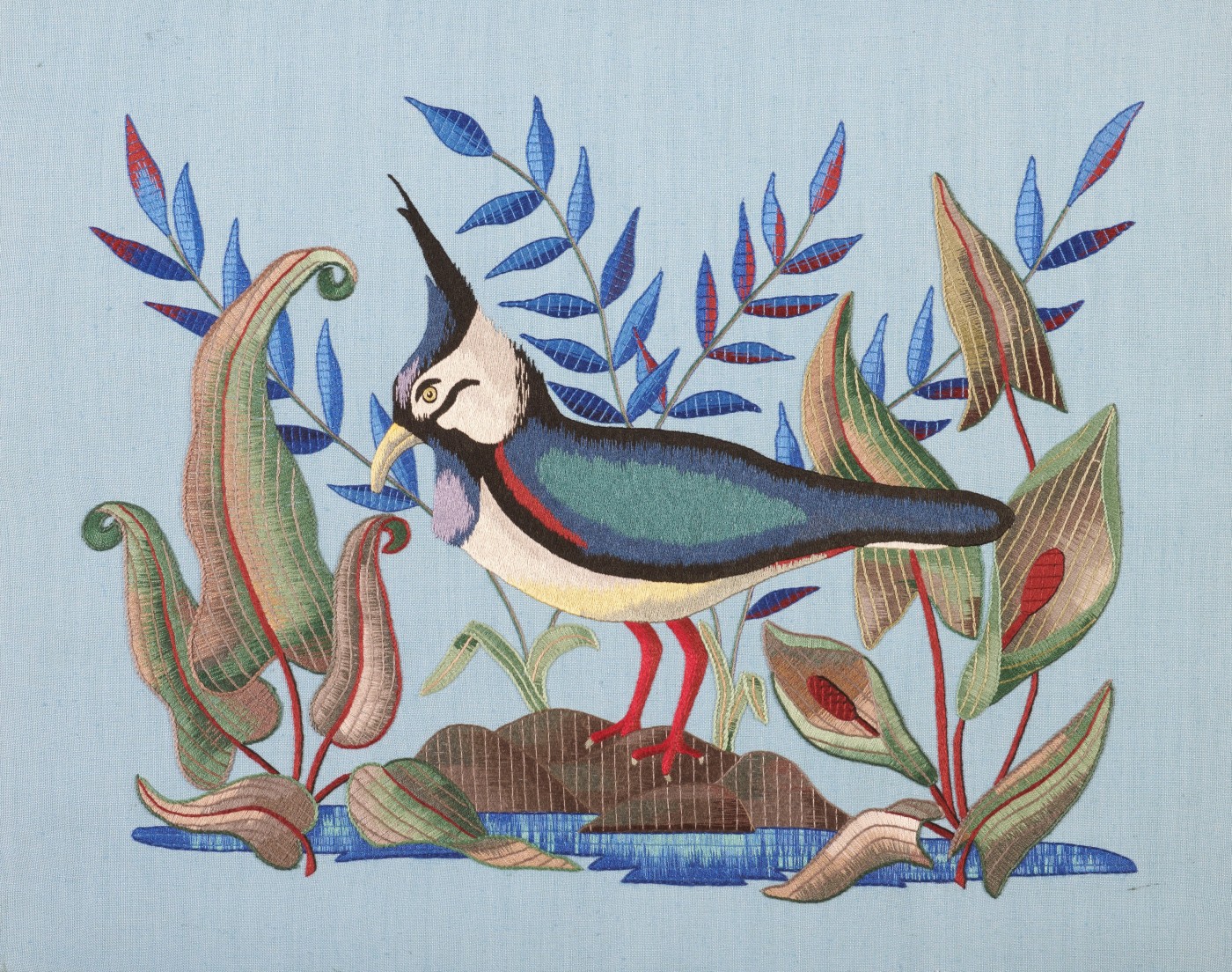
Silk Shading and Laidwork featuring a Lapwing by RSN Diploma Student, 1950s. Copyright Royal School of Needlework.